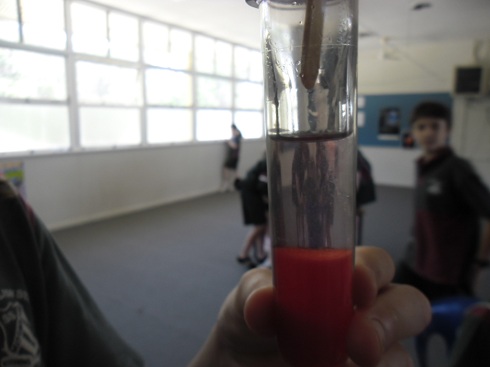Hands on Science in the Early Years

Hands on science activities to engage students in scientific inquiry and investigation are key in the early years to develop skills and knowledge in all areas of science. No one knows this better than Mrs Suzanne Clarke who is the founder of the mini-scammers science club at Mitchelton State School, a feeder club for SC@M (Science Club at Mitchie).

Established just this year, the junior science club encourages students in the early years to formulate hypothesis, carry out experiments and discuss their findings with their peers directly mirroring the similar process used in later years. Student work in multi-aged groups to manipulate materials and equipment, generate solutions and compare their results. As Mrs Clarke highlights “this method of discovery learning engages all children and promotes the use of multiple intelligences”.
Not only do hands-on experiential learning activities of this type cater to the multiple intelligences of students but also appeals to the senses as students explore colour, texture, sound, smell, touch and sometimes, but not as often, taste.
Some ideas for hands-on experiences engaging student’s senses in science in the early years are:
Professor’s Whizz Fizz – a carbon dioxide experiment using bicarbonate soda and lemon juice
Salty Crust – an experience in density and change using salt and hot water,
Magic ice – examining the effects of changing temperature using salt, water and thread
Goopy goop – experiencing colour and textural forms with the simplest of ingredients cornflour, water and food colouring,
Popping popcorn – examining the effects of heat (and having a tasty treat)
Jumping Fleas – exploring static electricity with balloons and tissue paper
While scientific inquiry often benefits from the use of specific scientific equipment, exploration of scientific ideas, knowledge and skills in the early years generally begins with a number of simple items located in the supermarket aisles. Choosing items such as salt, cornflour, food colouring, balloons and paper allows students to engage in hands on experiential learning safely and with a minimum amount of clean up. Though one of the students in the mini sc@mmers program explained that is was “really fun being messy”.
There is an old Confucian saying “I hear and I forget, I see and I remember, I do and I understand”. Current research suggests that this is just as relevant today, with hands on experiential learning mirroring the natural learning behaviours of young students. Through engagement in multi-sensory experiences that cater to students unique intelligences students develop meaningful connections with new ideas. Kinaesthetic learners explore scientific concepts through meaningful manipulation of materials and objects, visual learners observe and examine the processes and procedures of scientific inquiry, interpersonal learners explore concepts through shared actions with others and logical/mathematical learners examine patterns and complex relationships between concepts and ideas.
While essential throughout childhood the importance of hands-on, meaningful engagement in scientific inquiry in the early years cannot be underestimated. The level of abstraction which students are able to comprehend develops as students mature and the use of hands-on learning activities allows the exploration of scientific knowledge and skills in a concrete way. As further opportunities become available for students to participate in curriculum related scientific investigations and extra-curricular science clubs, I hope they truly do experience the opportunity to “do and understand”.
 Follow
Follow